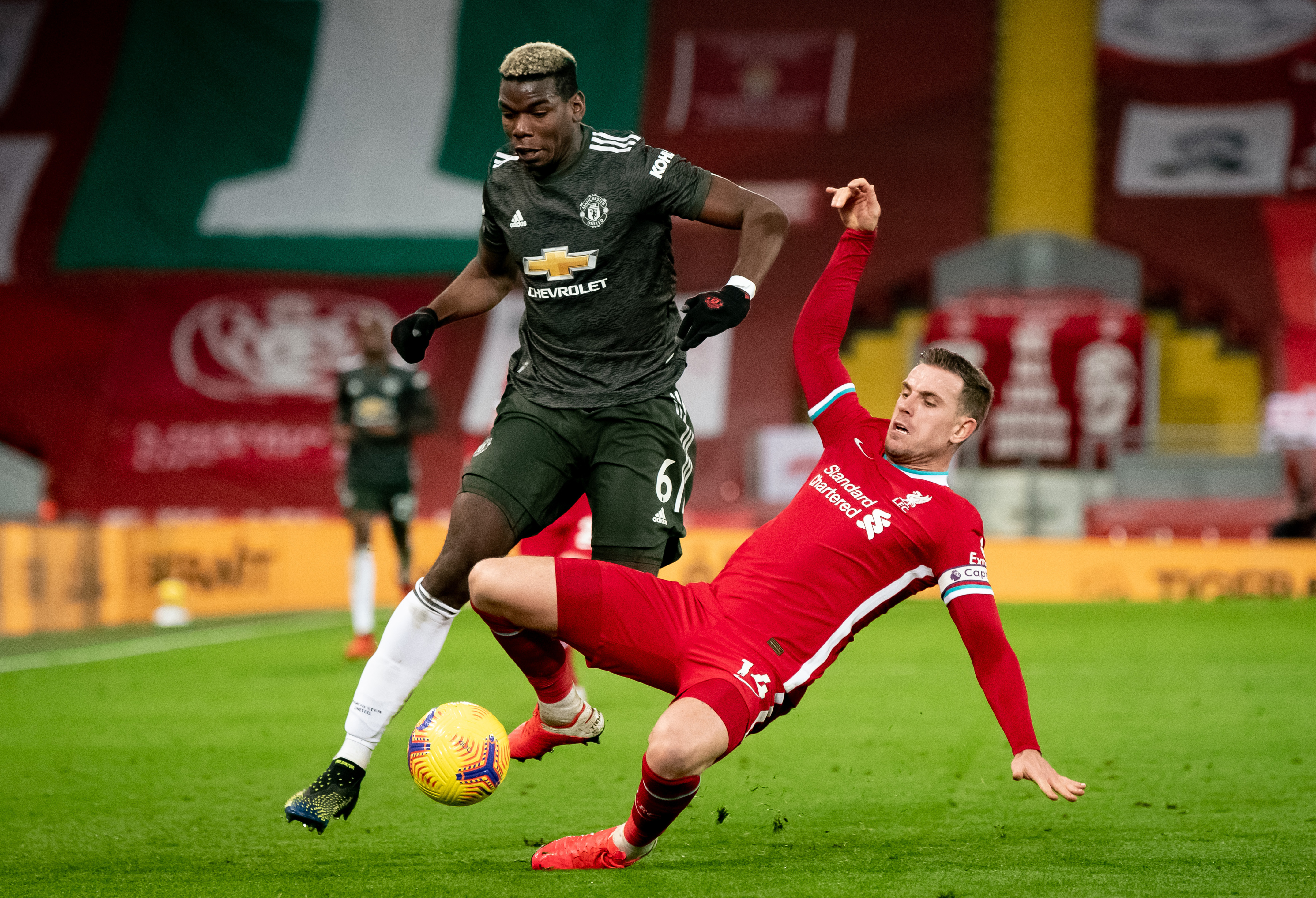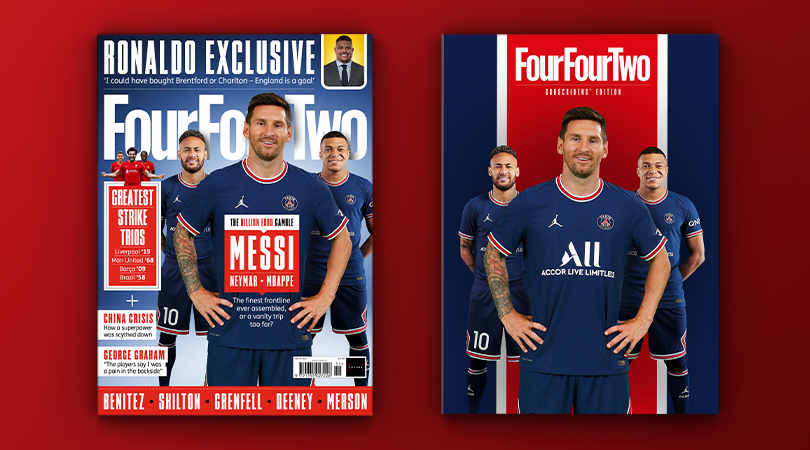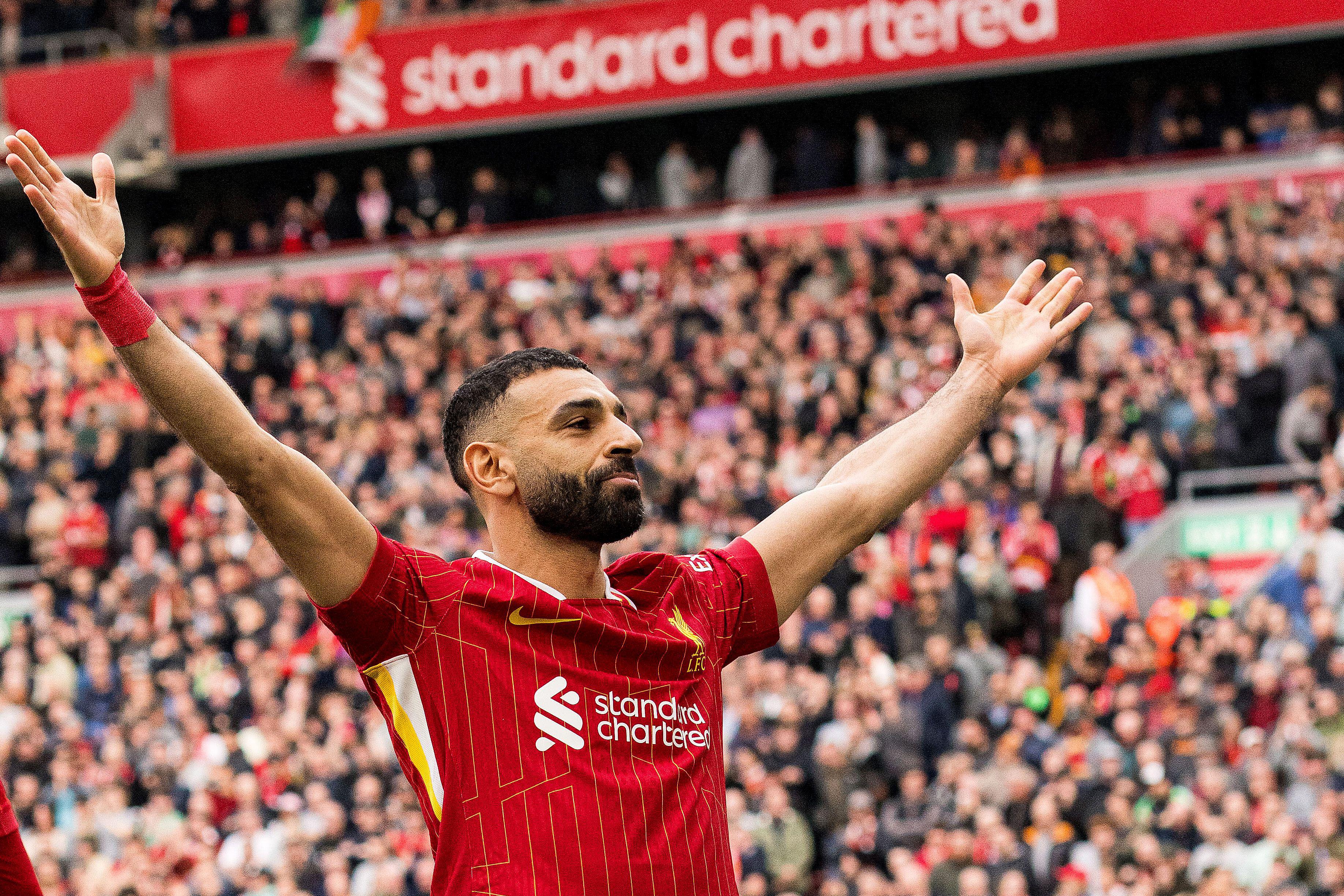Manchester United vs Liverpool: A battle between two very different midfields
Manchester United's star-studded midfield may be superior on paper, but lacks the cohesion and workrate of Liverpool's trio

Some 145 minutes into Manchester United’s season, Paul Pogba clocked up his fifth assist. It earned a draw at Southampton and brought the Frenchman level with Liverpool’s midfield: the 2020/21 version, who got five assists between them in the entirety in a Premier League campaign when Bruno Fernandes got 12, to add to his 18 goals.
Two seasons earlier, Pogba got 13 goals plus nine assists. And while penalties are contributory factors for both and other set-pieces play a part for Fernandes, historic rivals feel opposites. United can have the most productive midfielders in the Premier League, Liverpool the least of the contenders. Arguably, though, Liverpool have the most hard-working; the same may not be said of all their United counterparts.
It points to a fundamental difference in tactics as well as philosophy. United can feel the assortment of individuals, Liverpool the collective with a gameplan that calls for midfielders to sacrifice themselves to the cause. Their midfielders can be strangers to the final third, selfless figures who cede some of the responsibility for creating to Andy Robertson and Trent Alexander-Arnold but who cover for the full-backs when they surge past them. It summed up the emphasis in their thinking that Naby Keita was removed at half-time against Atletico Madrid after delivering a wonderful goal, but proving defensively deficient for the two that Antoine Griezmann scored.
NEWS Football Manager 2022 release: FM22 Beta version out now

Twenty-four hours later, Fernandes inspired United’s comeback against Atalanta with a glorious pass to release Marcus Rashford. Like Liverpool, United had been too open before the break: unlike them, it was as much by design as accident, with Ole Gunnar Solskjaer in effect playing 4-2-4.
Fernandes can feel an emblematic figure at Old Trafford, but also in the difference between the clubs. Jurgen Klopp often played 4-2-3-1 at Borussia Dortmund and in his first few months at Anfield. Since then, it is a Plan B, occasionally invoked, but with 4-3-3 the default shape. He has no No. 10 whereas since Fernandes was signed, Solskjaer’s preference is usually for 4-2-3-1, based around one. While Pogba can represent a separate conundrum, whether as ersatz left winger or in a deeper duo, there is a sharp division of responsibilities in the United midfield: Pogba and Fernandes are essentially attacking, while Scott McTominay, Fred and Nemanja Matic are lumbered with the more defensive duties.
There is more universality in the Liverpool midfield. Fabinho stands at the most defensive end of the spectrum while Keita, Alex Oxlade-Chamberlain, Harvey Elliott and Curtis Jones sometimes occupy the role of the most attacking of the trio, a player granted more leeway, but arguably the classic Klopp midfield was the trio who started the 2018 Champions League final: Gini Wijnaldum, James Milner and Jordan Henderson have considerable similarities, as versatile workhorses, each with the positional discipline to follow managerial orders. Each was capable of alternating positions with the others. In contrast, it is harder to imagine Fred and Fernandes swapping roles, or McTominay and Pogba.
Get FourFourTwo Newsletter
The best features, fun and footballing quizzes, straight to your inbox every week.
Wijnaldum was a symbolic figure. His goals could be measured in their importance, not their quantity, but they were relatively few for Liverpool; the Klopp blueprint, unlike the Solskjaer formula, relies far more heavily on the forwards to score. As his potent form for Holland showed, Wijnaldum was capable of being far more prolific but since Philippe Coutinho left, no midfielder has got more than five league goals in a season for Liverpool. They are not expected to. Instead, they are configured to stay close together, to present a barrier when Liverpool are not in possession, to pass and press. Work rate off the ball is a prime requirement, whereas United have a two-tier midfield, of craft and graft. If Liverpool are hard to play against, United can put up less resistance until opponents reach the defensive half of their team.
There is a hypothetical, if perhaps irrelevant, question if Klopp would have ever wanted to sign Fernandes and Pogba, had finances permitted, if he could mould them into his type of players or if their work rate out of possession would act as a deterrent. Separately, and given the different systems the respective managers employ, there is the possibility that the fairest comparison for Fernandes is Mohamed Salah, another who provides goals and assists in almost absurd quantities. But Manchester City, like Liverpool, favour 4-3-3 and Klopp’s No. 8s do not rival Kevin de Bruyne or, last season, Ilkay Gundogan for direct goal involvements. The demands between them and United are so different it feels as though there is no thought of putting up Fernandes-esque numbers.
But it is a strategy that has worked. United may have finished above Liverpool last season but the evidence of recent years is that while Solskjaer’s midfielders are likelier to be found on the scoresheet, Klopp’s tend to have more to celebrate.
Subscribe to FourFourTwo today and get three issues delivered for just £3.
Restock your kit bag with the best deals for footballers on Amazon right now
READ NEXT
FM22 Football Manager 2022: All the FM22 wonderkids you'll need to sign
SUPER SUNDAY Which European derbies are on this weekend and where can I watch them?
LIST Where's every Premier League owner from, and what is their net worth?
Richard Jolly also writes for the National, the Guardian, the Observer, the Straits Times, the Independent, Sporting Life, Football 365 and the Blizzard. He has written for the FourFourTwo website since 2018 and for the magazine in the 1990s and the 2020s, but not in between. He has covered 1500+ games and remembers a disturbing number of the 0-0 draws.

